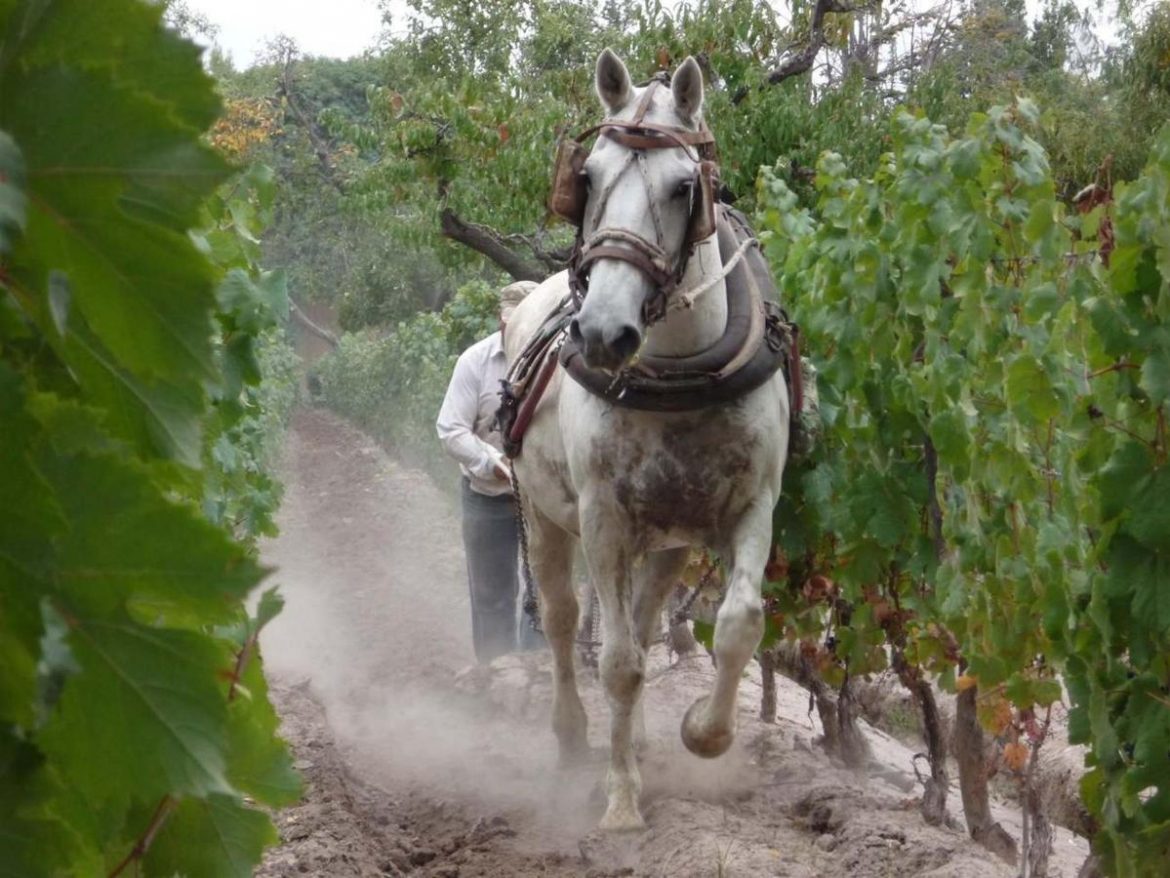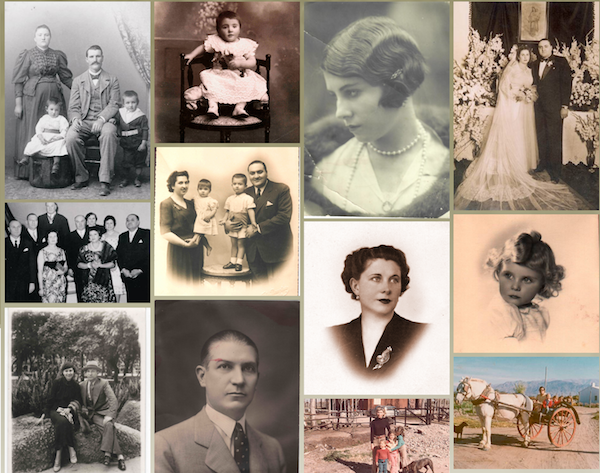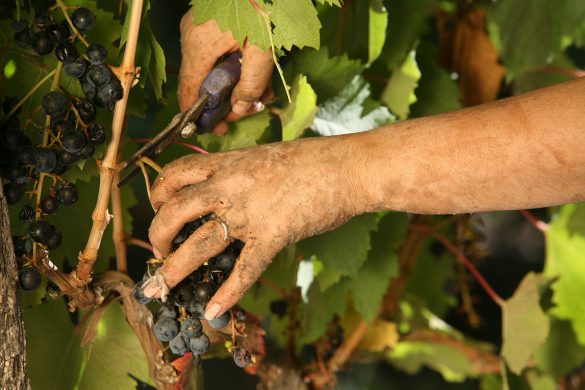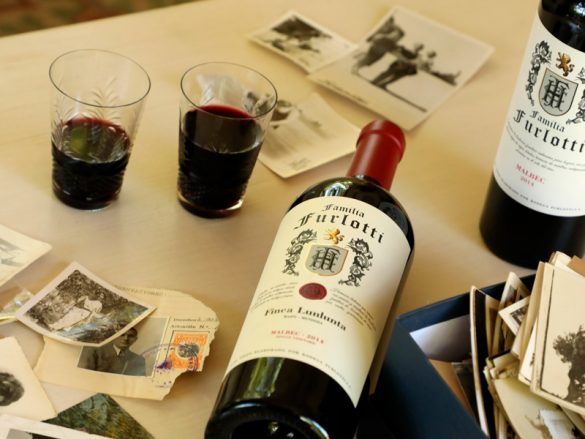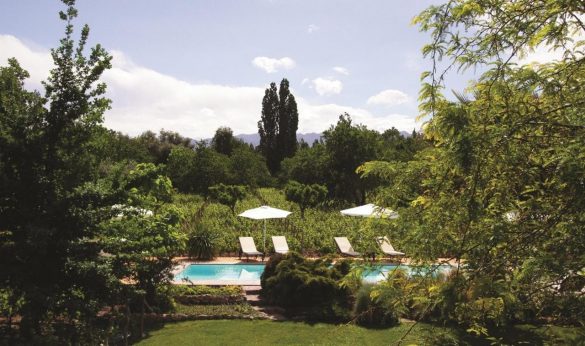“When you are born with a family name like mine, it can put you off being in the wine industry…” ruminates Gabriela Furlotti, the great-granddaughter of Angel Furlotti, who became one of the 20th century’s most prolific grape growers and wine producers in Mendoza, establishing Bodega Furlotti in 1914. The winery reached peak production in the 50s and the Furlotti family was one of the world’s largest vineyard owners at the time. Furlotti became a household name in Mendoza, as did their ‘Vino Leon’ wine, which was a popular fixture on most family dinner tables. “It certainly adds a lot of pressure to have the Furlotti name if you want to do anything in wine.”

Fresh off a boat and into the vineyard:
Angel Furlotti establishes roots in Mendoza as the wine industry takes seed
Angel Furlotti arrived to Argentina in 1888, with barely a dime in his pocket, from a small village outside Parma, in a period of mass European immigration. Over 7 million European immigrants arrived to Argentina between 1847 and 1939, almost doubling the population every 20 years, and mainly comprised of Italians, Spaniards, Germans and French – each of whom brought their own vine growing knowledge.
A government-led incentive offered free train rides from the port of Buenos Aires to the western mountain towns, in order to get people settling in Cuyo and ‘conquering the desert’ with viticulture and agriculture.
Recently arrived immigrants were invited to stay in convents until they had saved enough money to construct their own houses, and the contratista employment structure at the time allowed new immigrants to get a foothold in the economy. There were two models of contratista employment: a contratista for an established vineyard, who was only given a small salary for working the land but received 18% or 20% of the profits; and a contratista de plantacion, who was loaned virgin territory to plant a new vineyard, and received 100% of the profits.
“If they were hard workers and knew how to produce, immigrants could quickly get enough money to buy their own land – it’s how the industry grew,” explains Gabriela, whose great-grandfather started working as a contratista de plantacion in the early 1890s. By 1914, Angel Furlotti had accumulated enough land and vineyards to construct his own winery. “Land was cheap and if you worked hard it was possible to make a name for yourself back then.”
The influx of immigrants combined with the new railway (completed in 1883), which connected Mendoza to the market in Buenos Aires, meant that wine production could grow at an unprecedented rate. Before the railway, in 1883, there were just 2,788 hectares of vines planted in Mendoza, and within 20 years there were over 20,000 hectares (c. 1902) and by 1914 over 70,000.
The ‘American dream’ was well and truly accessible for those willing to work hard enough to achieve it, and in this period the founding fathers of Argentina’s modern wine industry all accrued significant land for vineyards and were producing wines at a rapid rate. Many of these original families are still major players in the industry today (Graffigna, Toso, Benegas, Suter, López, Pulenta, Arizu).
In the case of the Furlotti family, Angel Furlotti and his children went on to become Argentina’s largest vineyard owning family, and by the 1950s, the Furlotti family had 10 vineyards amounting to over 2,000 hectares, spread across Maipu, Luján and the Uco Valley, including today’s renowned sub-regions of Agrelo, Altamira, Lunlunta and Vistalba.
“I do remember walking through vineyards with my grandfather and seeing the large trucks pull in, but it wasn’t really romantic,” says Gabriela, sharing a frank perspective on Argentina’s ‘glory days’ of the 70s, when the country had over 350,000 hectares under vine and per capita consumption was over 90 litres per person.
“Back then, wine production was on a much larger scale, and not as focused on quality. It was a business, not romance. And a business that came once a year… as a young girl I remember having to wait until after harvest to see if I would get that new dress or not! You very much live by the harvest in the wine business.”
The end of the 20th century: a period of transition in Argentine wine
Born in 1968, exactly 100 years after her great-grandfather Angel Furlotti, Gabriela has lived through some major changes in Mendoza’s wine industry: she was born just before the mass production heyday of the early 70s, which came crashing down with the end of the Greco empire in the early 80s.
During the 60s and 70s, a mafioso and ambitious entrepreneur, Héctor Greco, had been steadily buying out the largest wine brands and producers, and gradually monopolising the industry. By the late 70s, Greco controlled 70% of the country’s wine production and was the owner of a large bank. He had actually been using depositors’ savings to finance his own business ventures, a dangerous move which eventually caused the bank to collapse – bringing down his empire and most of the wine industry with him. Thousands of growers were left unpaid and many of the humblest wine families were severely affected.
“I was really young when most of these crises happened, but I do remember all the kids at school talking about Greco when the crisis happened,” recalls Gabriela. “We didn’t even know who Greco was, but everyone was talking about him – it affected almost every family in Mendoza. But the wineries, like my family’s [Furlotti sold most of the business to Greco at the end of the 60s] were the least affected, it was the growers who suffered the most.”
Grape prices dropped by 80% between 1979 and 1982, and bulk wine prices fell from a dollar a litre to two cents a litre. There was a glut of cheap table wine left in the wineries, and no affluent market left to buy it. Few wineries were left unscathed by the crisis, but the brunt of the burnout was borne by the growers, who all of a sudden had no-one to sell their grapes to and no hope of income anytime soon.
The 80s were a painful and isolated period for most of Argentina’s wine producers and growers. The domestic market was shrinking at a rapid rate and showed no signs of recovery. Over a third of Argentina’s vineyards were abandoned or pulled out and by the end of the 80s, there were under 215,000 hectares left.
New beginnings & fourth-generation Gabriela Furtlotti revisits old roots
It was in the following decade that Argentina’s modern wine industry began to take shape. During the 1990s, Argentina entered ‘the Menem era’, during which President Menem pushed through free-market reforms, pegged the Argentine peso as equal to the US dollar and opened up the Argentine economy to the world. New vineyards were being planted and as land was cheap again, there were many foreign investors that came in and an export industry began to grow.
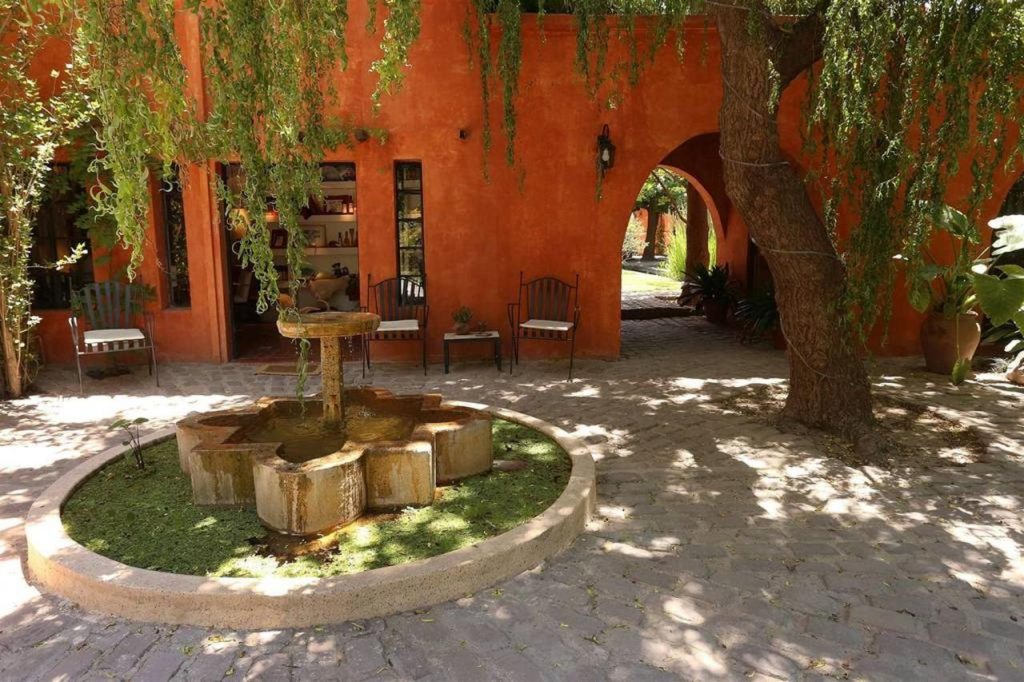
Finca Adalgisa is one of the few remaining traditional vineyards in Chacras de Coria, which has been overtaken by creeping urbanisation in the last two decades. The vineyard, which was planted in 1916, is predominantly old vine Malbec. “We say it is Malbec but if you walk through my vineyard you’ll find other grape varieties in there. That’s the beauty of old vineyards – the blend is actually made in the field for you. It is probably about 95% Malbec mixed with other grapes, there’s certainly some Barbera, Tempranillo, Cabernet Franc…”
And how many different Malbecs are in there, I ask. “I have no idea! But many. Some bunches are much bigger, or darker, than others. And this natural diversity is what makes old vineyards like this so special. When we harvest everything together, some of the grapes are still quite green, which gives us more acidity, whereas others add more fruit – it all adds to the complexity of the wine, and its uniqueness. It’s a vineyard blend that no-one else has, and that’s why these old vineyards are so distinctive.”
Saving her family’s beautiful old vineyard and this piece of not only her family’s heritage, but Argentina’s tradition and history, was the motive for Furlotti to start a wine B&B, named after the vineyard – Finca Adalgisa. The year 2000 was before any sense of ‘wine tourism’ existed in Mendoza, and Furlotti was one of the first lodgings in Mendoza’s wine regions.
“None of the wineries were even open for tourism then, but I thought that maybe there were some people who would want to stay overnight in Mendoza – although there was no plan to be honest!” Furlotti’s intuition was right, there were some people who wanted to stay in Mendoza, especially in her beautiful family home overlooking an old vineyard.
And as the next financial crisis, that of 2001, hit, suddenly Mendoza became tantalisingly cheap for foreigners to visit. Although it was a time of suffering for many Argentines and local businesses, the wine industry saw the silver lining of the financial crisis – their wines became highly sought after for the quality at such a low price, and wine exports and tourism began to grow.
After a few years of hard graft, Finca Adalgisa began to grow and Gabriela reinvested all the earnings back into the expanding lodge, the vineyard, and renovating not only a winery on the vineyard but one of her family’s (this time the Furlotti side) old wineries in Luján de Cuyo. “The winery is the smallest of the family’s but it is still far too big for me!” she exclaims. “We won’t ever make Furlotti wines of that dimension again – instead I’m renting space to small producers like myself.”
The modern era of Furlotti wine looks back to the very roots of how her family began, with Angel Furlotti as a small contrastista who worked the land and respected the traditions of his Italian ancestors. Gabriela too makes her wines in an artisanal and small-scale way, employing her vineyard workers with a fair-trade system so they too can take pride and ownership in the production. The Familia Furlotti wines take grapes from those same old vineyards that her great-grandfather originally established almost a century ago: in Altamira and Lunlunta.
Her Finca Adalgisa wine remains a field blend of her mixed century-old vines in Chacras de Coria, which are still hand-picked and the ground is still ploughed by horse. The wine rests in the cellar for several years before release, and the result is a wine that is a rich red blend that is both engaging and complex. And if you enjoy drinking it between the vines of Finca Adalgisa with Gabriela Furlotti, as the wine opens up you might just learn something about the liquid history of her family and with it, get an insight into how Mendoza became the wine capital it is today.
